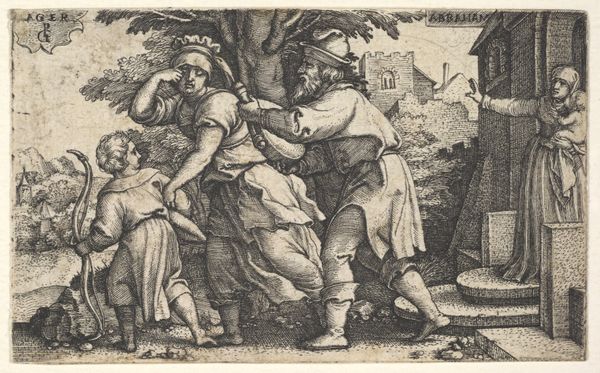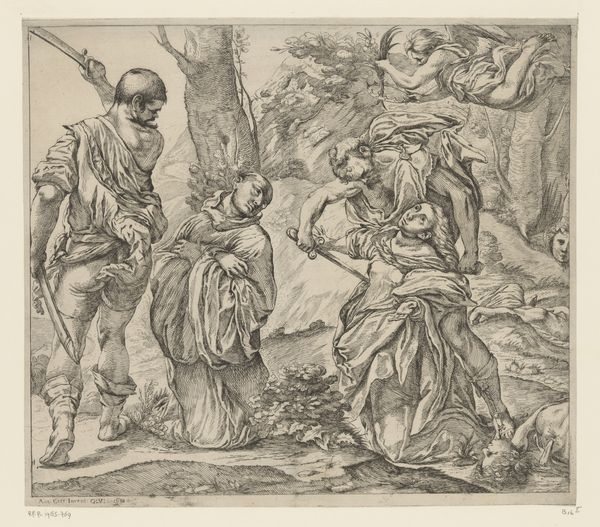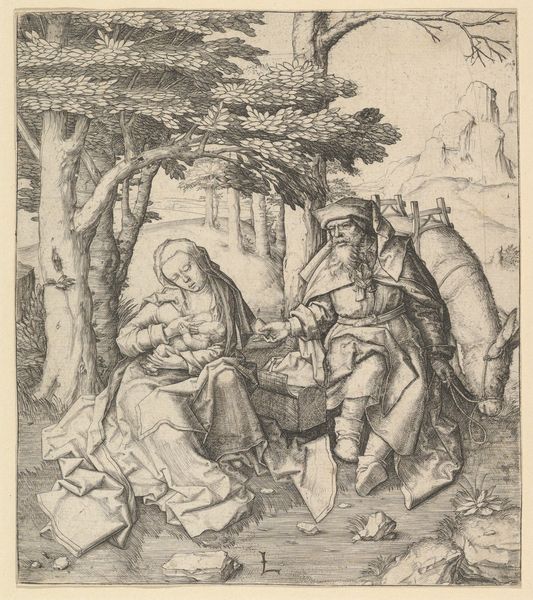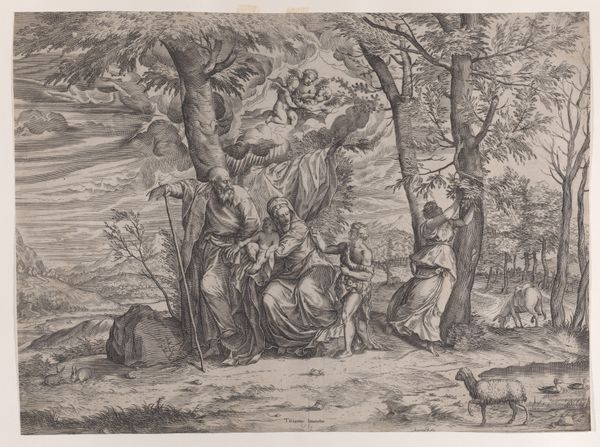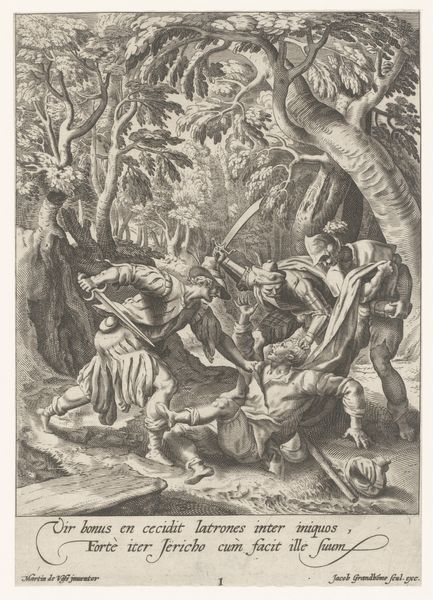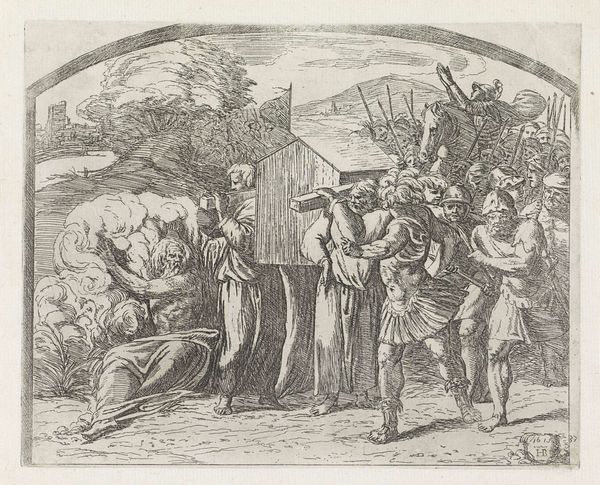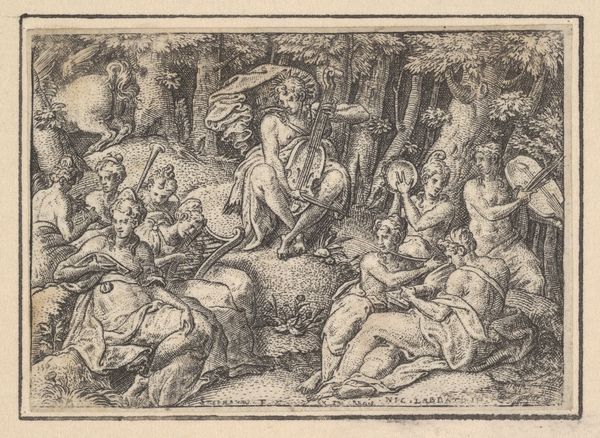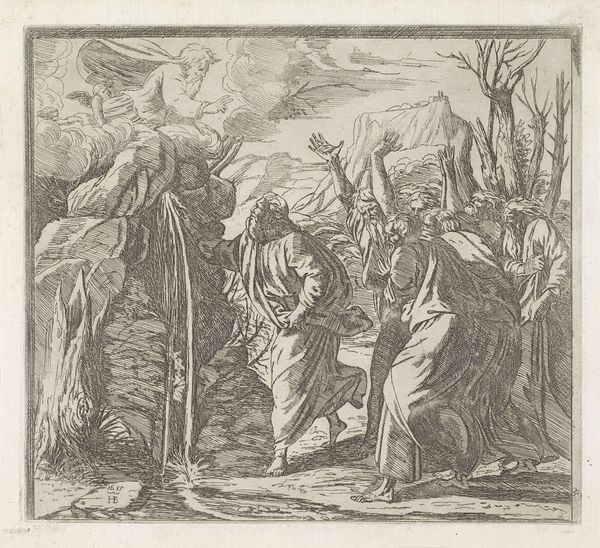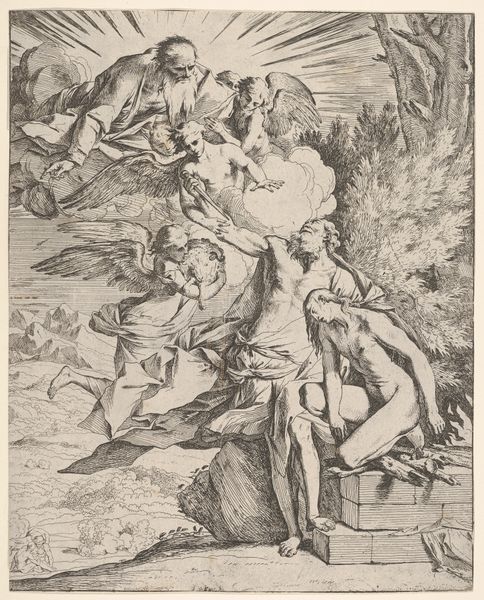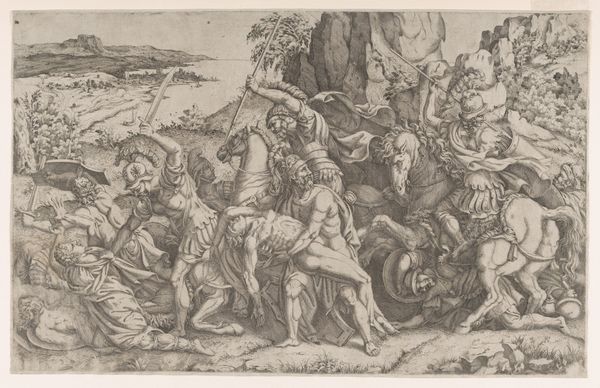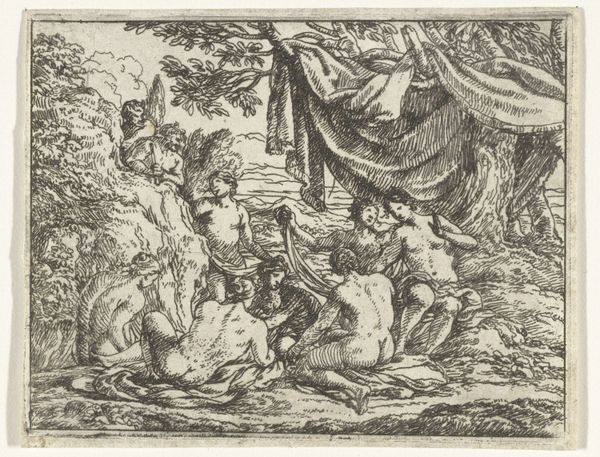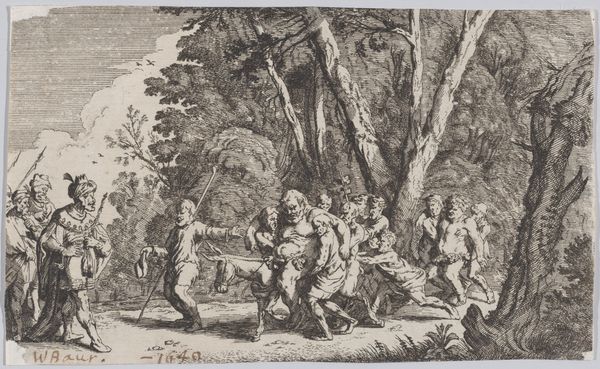
The Submersion of Pharaoh's Army in the Red Sea c. 1515 - 1549
0:00
0:00
drawing, print, paper, ink
#
drawing
#
narrative-art
# print
#
pen illustration
#
pen sketch
#
pencil sketch
#
paper
#
ink
#
history-painting
#
italian-renaissance
Dimensions: 406 × 558 mm
Copyright: Public Domain
Editor: This ink drawing, "The Submersion of Pharaoh's Army in the Red Sea" by Titian, probably made between 1515 and 1549, is a powerful scene of chaos. It’s so dramatic and crowded, I’m almost overwhelmed by the movement and emotion. What symbolic meaning would a viewer at the time grasp in the image? Curator: Notice how the waves aren’t just water, they become grasping hands, pulling down figures crowned with diadems—the symbols of worldly power now rendered meaningless. The Red Sea isn’t merely a body of water, it’s a symbol of divine justice and annihilation of those who challenged God’s will. Editor: So, the act of drowning isn't just literal, it’s also a symbolic destruction of power? Curator: Precisely! The anguished expressions aren't just about physical drowning, they’re reflections of spiritual and existential terror as the earthly power structure crumbles. Do you see how the figures desperately clutch at anything for support? That represents humanity’s futile attempts to cling to transient power in the face of ultimate forces. It reflects the frailty of human pride. Editor: And the figures on the left, seemingly untouched by the chaos? Are they the inverse symbol, spared by this higher power? Curator: Indeed. They represent the spared, carrying cultural memory. These aren't just figures standing safely; they’re embodiments of hope. Consider Moses's raised arm and resolute posture. What does that convey to you? Editor: I see it now: the hope is in faith, endurance, and divine protection—it's the persistence of their values that defines victory, not just physical survival. Curator: Exactly! The entire image then resonates with echoes far beyond a mere historical depiction. It becomes a statement about the human condition and eternal symbolic conflict. Editor: I had only seen a historical narrative before. Thanks, I am walking away from this conversation having learned how even the most basic elements are rooted in something bigger.
Comments
No comments
Be the first to comment and join the conversation on the ultimate creative platform.
